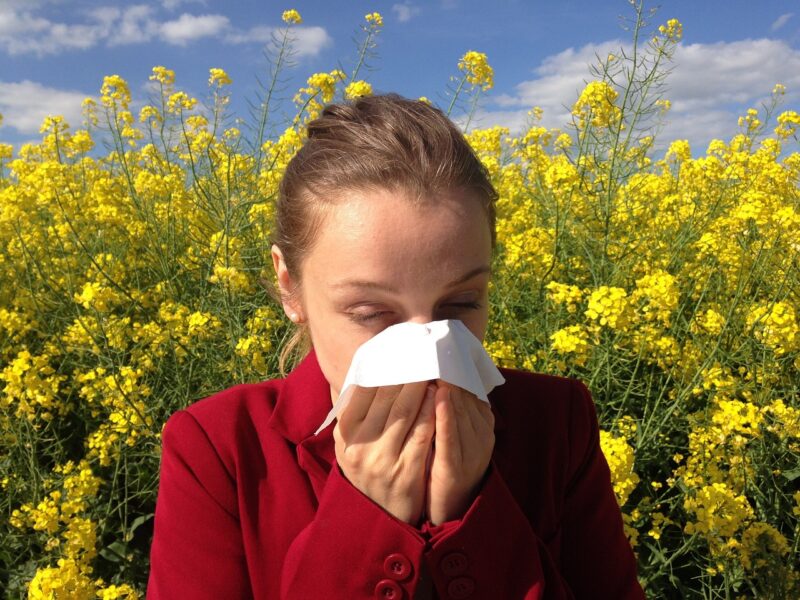How to Spot the Signs of Pet Allergies and What You Can Do About It
November 10, 2024

Having a pet can bring immense joy and companionship into your life. However, for some, it can also trigger allergies that can make life miserable. Whether you have a cat, dog, or any other beloved animal, it’s essential to know the signs of pet allergies, what triggers them, and the solutions available. In this article, we will delve into how to spot the signs of pet allergies and explore effective strategies to manage them.
Understanding Pet Allergies
Pet allergies are caused by an immune system response to specific proteins found in a pet’s skin cells, urine, saliva, or feces. When an allergic person comes into contact with these proteins, their immune system attacks them, leading to allergy symptoms.
Allergies can develop at any age, even if you’ve lived perfectly fine with pets before. The most common culprits of pet allergies are dogs and cats, but birds, rabbits, and rodents can also be problematic for some individuals.
Common Signs of Pet Allergies
It’s crucial to recognize the symptoms of pet allergies to manage them effectively. Here are some common signs to watch for:
- Sneezing and Nasal Congestion: Frequent sneezing and a stuffy or runny nose can occur after spending time near your pet.
- Itchy and Watery Eyes: Allergies can make your eyes itchy and watery, causing discomfort and redness.
- Skin Reactions: You may notice rashes, hives, or eczema-like symptoms, particularly in areas that have been in contact with your pet.
- Coughing and Wheezing: Allergies can trigger asthma-like symptoms, including persistent cough or wheezing, especially if you have a history of asthma.
- Fatigue and Malaise: Allergies can lead to chronic fatigue, making you feel generally unwell and lethargic.
If you start experiencing any of these symptoms after bringing a pet into your home, it’s important to consult with a medical professional for proper testing and advice.
Identifying Triggers
To effectively manage pet allergies, you first need to identify what specifically is triggering your immune response. This can include:
- Pet Dander: Tiny flakes of skin that pets shed can linger in the air and settle on surfaces, causing allergic reactions.
- Pet Saliva: When pets groom themselves, their saliva can spread allergens across their fur and into the environment.
- Urine and Feces: Proteins found in a pet’s urine and feces can also trigger allergic responses.
Keeping a diary of your symptoms and their correlation with pet exposure can help you pinpoint specific triggers and discuss them with your healthcare provider.
What You Can Do About It
While some people may face substantial challenges when it comes to allergies, there are practical solutions to mitigate symptoms and improve quality of life:
- Establish a Pet-Free Zone: Designating specific areas of your home, such as the bedroom, as pet-free can significantly reduce allergen exposure.
- Regular Cleaning: Keeping your home clean can reduce pet allergens. Vacuum frequently using a HEPA filter and consider using air purifiers to minimize airborne allergens.
- Bathe Your Pet Regularly: Regular baths can help reduce the amount of dander and saliva shed by your pet. Consult your veterinarian for the best bathing schedule and methods based on your pet’s type and breed.
- Use Allergy-Friendly Products: There’re many cleaning products designed specifically for homes with pets. Using these can help cut down on allergens that linger around your living space.
- Consult an Allergist: Seek professional help for allergy testing and treatment options. This may include antihistamines or allergy shots (immunotherapy) that can help desensitize your body to allergens over time.
- Choose Low-Allergen Pets: If you haven’t adopted a pet yet or are considering getting another one, research breeds that are often recommended for allergy sufferers, such as poodles or certain terriers, which are known for producing less dander.
Conclusion
Understanding the signs of pet allergies is vital for anyone who owns or plans to adopt a pet. By recognizing symptoms, identifying triggers, and implementing effective strategies, you can enjoy the company of your beloved pet while keeping allergy symptoms at bay. Remember, consulting a healthcare professional is key to managing your allergies effectively, so don’t hesitate to seek help when needed. With the right approach, you can create a harmonious home environment for both you and your pet.








